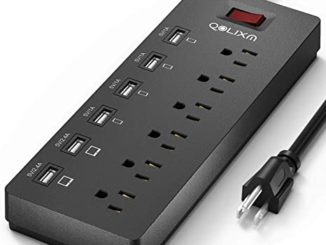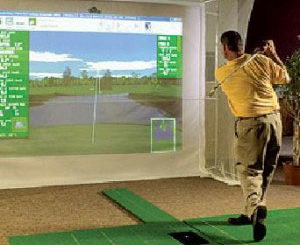
A golfer can swing the club on the correct plane and line on the backswing but if they overswing it becomes increasingly difficult to hit well timed golf shots. Hitting the ball consistently requires a simple golf swing that is easy to repeat and an overswing makes the swing much more complicated than it should be.
Three Common Causes of a Golf Overswing
There are three common causes of an overswing,
- Letting go with the fingers of the left hand, often referred to as a ‘piccolo grip’.
- Allowing the left arm to collapse and bend.
- Letting weight shift onto the outside of the right foot during the backswing.
If a golfer can eliminate these faults it will lead to a swing that maintains width on the backswing, and consequently a swing that is much easier to time consistently at impact.
Drill to Cure Letting Go with the Left Hand
To cure letting go with the left hand, slip a tee peg between the grip and the little finger so if the fingers lose their hold on the club the tee will fall to the floor. This is a simple drill but one that instantly helps the last three fingers of the left hand maintain a firm grip of the club throughout the swing.
Keep the Left Arm Straight
To maintain swing width with a firm left arm a golfer must check their flexibility. If they can easily maintain a straight left arm in a practice swing then it is a matter of discipline and practice. However, it is common for golfers to swing back too fast which creates too much tension as the club nears the top of the backswing. When the club is traveling too fast it is inevitable the left arm collapses under the stress. Keep the left arm straight by making a shorter slower backswing for much more control at the ball.
Position the Right Foot to Keep the Swing Under Control
Placing the right foot in the correct position at address can help a golfer keep the swing under control and eradicate an overswing If the foot is placed at right angles to the target, and the golfer is not very supple, the body turn can easily become a tilt or reverse pivot as the weight of the body collapses onto the outside of the right foot.
When the body tilts, instead of turns, the left arm impacts against the chest and then folds as it tries to move to the top causing an overswing and loss of control. By turning the right footout by twenty degrees or so, the body will turn deeper which will give space for the left arm to comfortably move to the top and remain firm.
Unless otherwise stated, PONIREVO and/or its licensors DO NOT own any intellectual property rights in the website and material on the website. Majority of the site’s content has been scraped and auto posted by a third party artificial intelligence program —– PONIREVO Creation Team.
Proudly WWW.PONIREVO.COM



